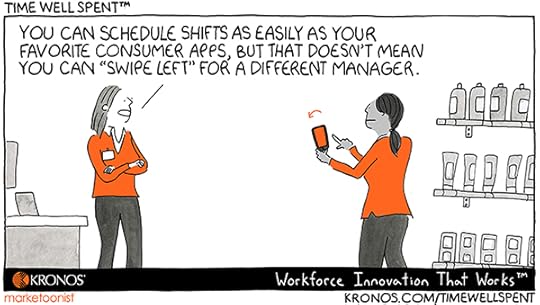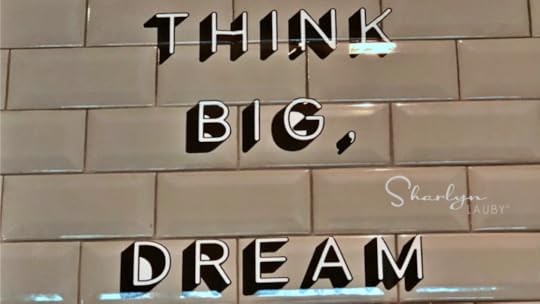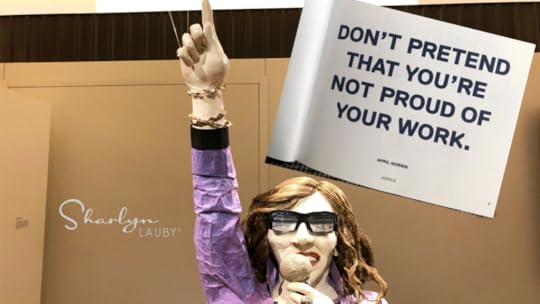Sharlyn J. Lauby's Blog, page 96
June 28, 2019
Flight Risk? Stay Interviews Can Alert Managers
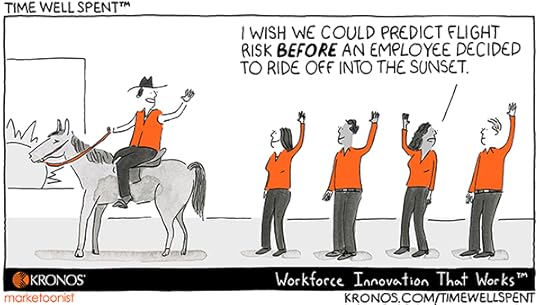
Today’s Time Well Spent cartoon from our friends at Kronos reminds me of a personal story. I went to work for a hotel company that was facing some challenges in the human resources department. I was hired to turn that situation around. The person who hired me said, if I did that, he would support me transferring to any hotel I wanted.
I accomplished my goal. Unfortunately, he left before I was able to transfer. I got a new boss and he was very nice. In fact, he promoted me. But the day that I walked in to tender my resignation, he said to me, “I had such plans for you.” Plans?! I knew nothings of these “plans”. They were never communicated to me. It takes good communication to understand what employees are thinking and feeling. Stay interviews could have been the solution.
Giving an employee a promotion or pay increase doesn’t guarantee they will stay. While I was happy to receive the promotion and pay increase, it wasn’t enough to keep me there. My guess is you have people in the same situation within your organization. Managers need to understand what motivates their employees. It might be very different from what motivates the manager.
Use stay interviews to find out what employees love about their work. There are always components of our jobs that we don’t like. And many employees don’t hesitate to tell us so. But as managers, do you know what employees love? It’s these things that managers want to make sure don’t change. Managers can ask employees during one-on-one meetings what they like about their role and the projects they’re working on.
If you can’t give employees what they want, support their decisions. Sometimes, no matter how hard we try, employees are not going to be satisfied with their current work situation. And we aren’t in a position to change that. When those situations occur, instead of getting mad or frustrated, let the employee know that whatever decisions they make – in terms of staying with the company – they will be supported. Maybe at some point in the future, the employee will want to return.
Figuring out who the flight risks are in your organization doesn’t have to be hard. It does take regular, open communication. Stay interviews can help. Employees need to feel that they trust the organization enough to share what they’re thinking about when it comes to their job.
The post Flight Risk? Stay Interviews Can Alert Managers appeared first on hr bartender.






June 25, 2019
Organizations: Remember that Experiences Matter
I’d like to think that we know this, but I’m often amazed that organizations don’t think about it more. Experiences matter. Even when they’re not the most pleasant experiences. For example, in the latest Talent Board North American Candidate Experience Research Report, fifty-two percent of candidates said they were more likely to increase their relationship with an employer if they were given interview related feedback by the end of the same day. Regardless of the type of feedback.
In addition, the way that feedback is conveyed plays a big factor. According to the same report, candidates conveyed positive ratings upward of 28 percent when they received feedback over the phone versus an auto-generated email.
These statistics are a clear indicator that the candidate experience is important. It can have an impact on whether a candidate chooses to apply again, refers other candidates, or makes purchases with your organization. BTW – if you want to see the full Talent Board report (and, trust me, you will), you can obtain it via their website.
The experiences in the Talent Board report reminded me of a presentation I heard during last year’s Influence Greatness conference hosted by O.C. Tanner. One of the speakers was Chip Heath, author of the best-selling books “Switch: How to Change Things When Change is Hard” and “Made to Stick: Why Some Ideas Survive and Others Die”. Heath was talking about experiences as well, but he chose to do it in a different way. He talked about his experience at Walt Disney World.
Heath went on a very long rant about how Florida is hot and humid, and Walt Disney World is crowded and expensive. And I’ll admit, all of those things are true. But my takeaway from Heath’s session was that context matters when it comes to experiences. Here’s why: I grew up in Orlando, Florida. My father was on the construction crew while Walt Disney World was being built. When I was growing up, he would take us out to see these big piles of dirt and talk about how it was going to become Cinderella’s Castle. Once the parks opened, my mom worked at Disney for over 30 years.
Is Disney hot, humid, crowded, and expensive? Yep. Do I think about any of those things when I’m there? Nope. But Chip Heath does because he doesn’t have the same context. Don’t get me wrong, I’m not criticizing him. It’s not a shortcoming on his part.
What it means for organizations is, we need to be keenly aware of context as we’re building experiences. Whether those are for candidates, employees, or customers. Using the Disney example, I can’t forget that most people don’t have my frame of reference when it comes to visiting the theme parks. If I do, then I could make some incorrect assumptions about the kind of experience that someone wants.
As organizations focus on brand awareness and experiences, it’s important to ask the right questions about context. Where do our customers / candidates / employees come from? What’s their initial perception about our brand? The answers to these types of questions could provide the context necessary to properly market your brand.
Image captured by Sharlyn Lauby somewhere off the coast of Miami, FL
The post Organizations: Remember that Experiences Matter appeared first on hr bartender.






June 23, 2019
Travel Incentives: 4 Great Reasons to Offer Them to Employees
(Editor’s Note: Today’s article is brought to you by Xceleration , an organization focused on creating employee engagement, sales incentive, and customer loyalty programs. For over 20 years, Xceleration has provided cutting-edge employee recognition and incentive solutions , and their unique “Travel by Design” programs help businesses incorporate unforgettable experiences into their reward offerings. Enjoy the article!)
I ran across this article from Fast Company magazine talking about “The Science of Why You Should Spend Your Money on Experiences, Not Things”. It’s a fascinating read. Be sure to check it out when you have a moment. My takeaway from the article was that organizations might want to spend some time thinking about what makes for a meaningful thank-you to employees. And, ask them, “Should we consider rewarding employees with experiences, like travel incentives, versus things?”
Individual travel incentives are a customizable option for recognizing employees with a personal travel experience, which can be taken solo or with a partner. And they can boast an incredible return-on-investment (ROI). If your organization hasn’t ever considered a travel incentive before, here are four reasons why both the organization and employees might love them.
Cost. Okay, let’s address the elephant in the room. Offering individual travel incentives and rewards for significant accomplishments doesn’t impact your bottom line as much as you may think. For example, if the company’s top salesperson exceeds last year’s goal by 10%, that 10% represents a substantial revenue increase to your company. And, the company can allocate a small portion of that increase as a travel reward. That’s a big win for everyone.
When thinking about how much to spend on a travel incentive, keep in mind that there are plenty of locales that can offer a great experience without breaking the bank. Examples include: a fun weekend in New Orleans, a getaway to Sedona for some world-class hiking and sightseeing, or even a trip to New York to check out a couple of museums or a Broadway show. It is possible to find a domestic destination that fits your budget.
Flexibility. Another obstacle that comes up when discussing travel incentives is the “old school” model which typically involved a company group trip, usually with senior leadership, managers, and co-workers, to a pre-determined location at a pre-determined time. As you might imagine, some employees found this to be somewhat less than enticing, much less rewarding. Even if you like your boss and colleagues, chances are you do not want to go on vacation with them. Okay, maybe some of you do and that’s fine. You can still do that with a travel reward.
But for those employees who want to share the experience of travel with their family or friends, let them! Letting your employees choose their destination, their travel window, and with whom they get to travel is a massive incentive. This flexibility allows the organization to shift what might be seen as an obligatory company trip into an actual, meaningful reward.
Appreciation. Now that we’ve gotten the cost and scheduling conversations out of the way, remember the purpose of this benefit: to recognize employees for their hard work and accomplishments. When organizations make a big deal out of rewarding employees, you’ll be pleasantly surprised at just how long employees will remember. This totally links to the Fast Company article above about objects losing their shine faster than experiences.
As someone who has worked in the travel industry, trust me when I say this: travel perks are cool. It’s one of the reasons that people work in the industry. Companies (outside of the travel industry) that offer travel incentives are capitalizing on the cool factor by giving employees the perks of their industry – whatever it might be – PLUS the perks of travel.
Well-being. Finally, with all of the talk about wellness and well-being, it’s important to note that time away from work can re-energize the employee. It can provide some stress relief. The employee returns to work feeling great, and they’ll bring that positivity back with them to the office, sharing the experience with their co-workers through photos, stories, and the like. Oh, and don’t forget that employees might also want to share their experience on social media, which could be great for the organization’s employment brand.
This raises another point. Sending an employee on an incentive trip has effects beyond just the traveler. Travel incentives and rewards can also drive performance of the rest of the team. For instance, if I see how my colleague Leonard went on a fabulous trip and came back all refreshed, I might want a trip too. Call it a little office jealously if you will. But, when administered correctly, travel incentives can help the team as well as the individual.
Travel Incentives Offer A Reward Within the Reward
As the recruiting market continues to challenge businesses, we need to find new ways to stand out in the crowd – both from a candidate and an employee perspective. While there’s nothing wrong with cash bonuses, they do tend to just be used to pay the bills. It seems to me that, if organizations want to stand out, then the way to thank employees is by sending them to the beach, where they can sip on a Piña Colada and soak up the rays. Not on a few dollars to fill up their gas tank or pay the electric bill.
Travel incentives offer unique experiences to employees. Due to their fun and glamorous nature, they can have a higher perceived value. That’s what makes travel a powerful incentive to do great work and exceed goals. If you want to learn more about how travel incentives and rewards can help your employee recognition efforts, be sure to check out the Xceleration blog.
The post Travel Incentives: 4 Great Reasons to Offer Them to Employees appeared first on hr bartender.






June 21, 2019
Organizations: Are You Creating a Swipe Left Employee Experience
(Editor’s Note: Today’s article is brought to you by our friends at Kronos , a leading provider of workforce management and human capital management cloud solutions. Want to create an inspired workforce where employees swipe right? Check out Kronos CEO Aron Ain’s new book “ Work Inspired: How to Build an Organization Where Everyone Loves to Work ”. Enjoy the article!)
Swipe left is a pop culture term that means to reject someone. It’s used in the dating app Tinder to say “no thanks” to a potential date. (For the record, I do not have a Tinder account or app. I’m getting this information from the internet. Honest.) Anyway, over the course of time, swipe left has become the term for rejecting someone or something.
Today’s Time Well Spent from our friends at Kronos reminds us that employees have choices when it comes to their work environment. And if they’re not engaged then they might decide to swipe left and leave. Or even worse, swipe left and stay.
Companies need to connect the candidate and employee experience. Because recruiting is so tough, organizations are very focused on the candidate experience. Keep in mind that once you hire that candidate, the job is to keep them. Creating a smooth transition from candidate to employee is key. Activities like preboarding, orientation, and onboarding can facilitate the transition.
Employee check-ins keep little issues from becoming big issues. In my experience, organizations know the big things that bother employees. The hard part is finding out about the little annoyances. Employees don’t want to bring them up personally because they might seem petty, but they can quickly become big challenges. Use pulse surveys and one-on-one meetings to find out (and fix!) the little stuff.
Technology can enhance the employee experience. Since we are talking about a technology term, it’s only fitting to remember all of the wonderful things that technology can do for us – both personally and professionally. Today’s technology allows employees to have experiences that are similar to what they have access to in their personal lives.
When it comes to their careers, employees don’t want to swipe left. It’s up to organizations to create a work environment that makes employees want to swipe right.
The post Organizations: Are You Creating a Swipe Left Employee Experience appeared first on hr bartender.






June 20, 2019
Project Management: 7 Steps for Effectively Managing a Project
I ran across a post that I wrote several years ago about the skills HR needs to remain relevant and valuable. On some level, I think HR still needs those skills. One of the skills I talked about is project management.
As a human resources professional, I honestly do not remember a time when I’ve had no projects on my plate. There’s always some project going on. It could be a large project, like implementing a new Human Resource Information System (HRIS) or a small project like updating the employee handbook. And everything in between.
Whatever the project, there are some basic rules that are helpful in project management. These rules help build the right foundation for the project as well as manage the actions taken.
Identify the work. This sounds so basic, but many projects start with some vague idea. Which is fine, but at some point, there needs to be a clear project goal. At the start of any project, the goal or purpose of the project should be defined. The last thing anyone should want is scope creep. If new issues arise, that’s fine too. But they do not all have to be addressed within the project.
Create a plan to get from the current state to the future state. A traditional gap analysis is great for answering the questions “Where are we today? And where do we want to be in the future?” The answers to these questions are going to create the roadmap for the project. This step can also serve as a place to get buy-in from key stakeholders. Make sure everyone agrees on the plan.
Establish metrics to measure success. Define what success looks like. Projects aren’t always huge endeavors, and this doesn’t need to be a huge outcome like “save $1M to the bottom-line”. A project is simply defined as an individual or collaborative enterprise that is carefully planned and designed to achieve a particular aim. So, define what that “aim” is.
Ask for help. While individuals can do small projects on their own, large scale projects need teams. What’s key in this step is to A) choose the right number of people and B) select the individuals with the right skills. Often, project teams take an office politics approach when it comes to selecting the employees who will be on the team, which is fine if the right people get on the team.
Match people with work. Speaking of teams, let’s discuss part B in #4 above. There needs to be a reason that someone is on the team. And it’s possible that project team leaders will need to select their harshest critics for the team. That’s not a bad thing. Having diversity on teams is important, including diversity of thought. One more thing, when you put someone on a team, tell them why they’ve been chosen.
Monitor progress toward results. The business world operates too fast to simply work the plan and not take time to evaluate progress. Consider using an agile approach and establishing milestones in the project. At each milestone, the team can look at what’s been accomplished and if any adjustments need to be considered. It’s also a good time to evaluate resources to ensure that there’s enough to continue.
Change the plan as conditions change. Speaking of evaluation and resources, one of the worst things project teams can do is not make adjustments to their plan as conditions change. There’s absolutely nothing wrong with tweaking the scope, changing team members, and frankly, putting the project on hold if needed. Project management is about managing the project, not about plodding along blindly to what’s taking place around you.
Whether you’re the project leader or a member of the project team, good project management is essential – to the company and your career. I realize that sometimes being assigned to a project can seem like a huge PITA, but the reality is projects can give you the exposure you need for career advancement. So, learning how to manage projects should be a piece of your career development.
Image captured by Sharlyn Lauby while exploring the streets of Gainesville, FL
The post Project Management: 7 Steps for Effectively Managing a Project appeared first on hr bartender.






June 18, 2019
Candidate Experience: Engaging Job Seekers During the Silent Period
(Editor’s Note: Today’s article is brought to you by Paychex , a leading provider of integrated human capital management solutions for payroll, benefits, human resources, and insurance services. Backed by more than 45 years of expertise, Paychex serves over 650,000 payroll clients across more than 100 locations in the U.S. and Europe and pays one out of every 12 American private sector employees. Enjoy the article!)
I recently heard an interesting workplace term regarding the candidate experience – the silent period. Think of it as the period of “radio silence” between the company and the job candidate. I can see it happening a couple of times during the hiring process:
While the company is making their final decision. All the interviews are completed, the hiring manager is in the selection and evaluation phase, and the candidate doesn’t know if they are going to be extended an offer. This can happen for both internal and external candidates.
After the job offer and before the candidate officially starts. The candidate has accepted the offer and they’re working out their notice. Again, this could be for internal and external candidates. But there’s no communication until the new hire’s first day.
Sometimes this “silence” can lead to ghosting, where the candidate simply stops communicating with the company. Or maybe they’ll be a no-show on their first day of work. I’ll save the ghosting conversation for another day, except to say that ghosting doesn’t benefit anyone. And from a company perspective, the organization is now faced with starting their search over. This means delays and creates a huge waste of company resources.
2 Activities to Engage Candidates During the Silent Period
Ideally, organizations need to figure out how to engage candidates during these silent periods. For a better candidate experience, here are two activities to consider:
1. Get hiring managers involved. Ultimately, the hiring manager is going to want to build a relationship with the candidate. It’s that relationship that starts the engagement process. Hiring managers could send a quick note to candidates just letting them know what’s happening with the hiring process. Even better, pick up the phone and call candidates just to keep them in the loop.
Relationship management is a competency in the Society for Human Resource Management (SHRM) Competency Model. Personally, I think relationship management isn’t just an HR competency. It should be a competency for all employees and managers. Organizations should make relationship building part of the company’s management development and manager onboarding programs. It’s a skill that will help managers throughout their entire career.
2. Create a preboarding component. Preboarding is the concept of providing information, helpful tips, and more to employees before their first day. Preboarding sends the message that the company is preparing for the employee’s first day and wants the employee to succeed. Just think how that impacts the employee experience. Today’s technology can assist in preboarding efforts by automating emails to the soon-to-be employee with answers to common questions like “Where do I park?” or “What’s the dress code?”.
Hiring managers can play a key role in preboarding efforts by sending welcome messages and taking care of first day details like setting up an employee’s email address and getting their workspace ready. They might also want to contact an employee to let them know that lunch will be provided on their first day. And introduce them to a “buddy” who will be helping them get acclimated to the work environment.
Candidate Experience – Keep Lines of Communication Open
Organizations don’t need to speak with candidates every single day to improve the candidate experience, but they do need to keep lines of communication open. There’s an old saying about when people don’t have information, they tend to make it up in their own minds. That could include assuming the company doesn’t care and is breaking ties.
HR and management can work together to give employees good information so they stay engaged. If you want to learn more about keeping candidates and employees engaged, check out my interview with Paychex about how manager onboarding can help with employee engagement efforts. You can also download a white paper on steps for creating a preboarding program.
The post Candidate Experience: Engaging Job Seekers During the Silent Period appeared first on hr bartender.






June 16, 2019
Workism: Employees Need to Understand the Role of Work In Their Lives
Have you heard of the term “workism”? I read an interesting article in The Atlantic recently titled, “Workism is Making Americans Miserable”. Workism is the idea that our work is a means of identity. It’s not the same as being a workaholic, which is a person who compulsively works hard and long hours. Workism is the concept that work not only provides us with the money to survive but that it’s the centerpiece of our life’s purpose.
If that’s the definition of workism, I can immediately see how it can be detrimental. In the United States, there are plenty of research studies that show Americans work longer hours, take less vacation time, and retire later than most countries with comparable economies. And I’ll be the first to admit that’s there’s nothing wrong with working. I work long hours. I like to work. I have great clients who ask me to work with them on interesting projects. But work isn’t the only thing that defines me. And I think that’s the point.
There a real risk that, if work is the sum and substance of a person’s identity, it could create an unmanageable level of stress and burnout. You’ve probably seen t-shirts like I have about “always hustling” or “never stop…”. Instead of viewing these statements more as inspiration or guidelines, some people are taking these mantras literally and ultimately finding themselves physically and spiritually exhausted.
As human resources professionals, we need to be aware of this trend. While The Atlantic article talks about workism in the context of the Millennial generation, I could see this happening at any generation. We could have employees at our organizations right now who are working a full-time job with us and a side hustle outside of work … leading to disengagement, stress, and burnout. Yes, we want employees to work hard and be productive. And if they want to do some gigs on the side, then great. We also need for employees to understand and practice healthy balance.
I totally understand that employees get their perceptions about work from many different places: past and current employers, business leaders, the media, etc. Organizations have the ability through their company cultures to help employees understand the role work should play in their lives. Make no mistake – work is important. But does it really need to define us? Hmmm…
Image captured by Sharlyn Lauby at a Cirque du Soleil show in Orlando, FL
The post Workism: Employees Need to Understand the Role of Work In Their Lives appeared first on hr bartender.






June 14, 2019
You Can Work From Anywhere – But That Doesn’t Mean You Should
One of the first lessons that I learned as a consultant was “just because I can, it doesn’t mean I should”. For example, just because I can do my own taxes, doesn’t mean I should. I’ve found hiring an accountant saves me time (that I can spend with clients) and saves me money.
In my personal life, just because I can change a tire, doesn’t mean I should. AAA arrives quickly and does a great job. It saves me from the frustration and getting really dirty. Besides, it’s a membership benefit.
But most importantly, just because I work from home and can work anytime, doesn’t mean I should work all the time. Today’s Time Well Spent from our friends at Kronos reminded me the same goes with technology. Just because I have great technology that allows me to work anytime, doesn’t mean I should work anytime.
I don’t draw a lot of boundaries between my work and personal life, but I do have a few that are pretty sacred to me. Like I rarely look at my phone during dinner. Unless it’s to Shazam a song at a restaurant or settle an argument about trivia with Mr. Bartender (I usually win). LOL! I also don’t spend weekend nights on the computer. Right now, you can find me eating nachos and binge-watching old episodes of Chuck.
Enough about me. The point is, each of us needs to put some serious thought into our time. And how we’re going to spend it.
Establish priorities. This sounds so simple, but I find it’s really hard. So many times – especially in a work context – we’re told everything is a priority. Take a moment to ask yourself, “What are the 3-5 most important people or activities in my life?” Be specific. Maybe it’s coffee in the morning with your partner. Or helping the kids with homework at night. Or being able to have one-on-one meetings with your team.
Set boundaries. Don’t interpret the word boundaries to mean a lot. You can have just a few boundaries. Or lots of them. The choice is yours. Your boundaries also don’t have to be set in stone. Maybe over the summer months, you’ll have more boundaries and in the fall, fewer boundaries. But have boundaries. It’s healthy to have boundaries.
Make time for yourself. In the process of establishing priorities and setting boundaries, don’t leave you out of the equation. Where in your priorities and boundaries did you carve out time for something that you like to do? Just for you. Maybe it’s listening to a podcast. Or having a cuppa tea on the back porch.
Technology is a wonderful thing that can give us flexibility. We can quickly take care of a work emergency and get on with our fun. But we must be careful not to let those 5-minutes here and 10-minutes there rob us of our time to relax and recharge.
The post You Can Work From Anywhere – But That Doesn’t Mean You Should appeared first on hr bartender.






June 11, 2019
The Rise Of the Individual Employee
At last year’s HR Technology Conference, Josh Bersin talked about the changes taking place in the modern workplace. In particular, he spoke about how employees are overwhelmed, and the answer is to design better jobs, provide more supportive management, and create better alignment between individual work and company results.
Individual employees have more influence than ever before. Some of that could be due to the role technology plays in our lives. Individuals have the ability to create powerful personal brands using social media. Add to that what’s taking place in the recruiting market – more job openings than job seekers – and this puts the individual in a strong power position.
I don’t mean that in a bad way. Employees aren’t trying to take advantage of their employers. But it does mean that organizations need to think about both individuals and teams when designing experiences, policies, and procedures. Let’s face it, organizations haven’t always updated policies and procedures to align with the modern workforce. It’s time.
HR plays a key role in this workplace transformation. HR needs to propose workplace solutions that create a value add in terms of productivity. Here are five things to consider:
Strategize company culture. This is not some sort of fluffy stuff. I’m not opposed to culture mantras about the value of people. That’s important. But it’s equally important to have a clear culture that employees understand. Employees want to believe in their companies. That means believing in the company culture.
Use design thinking as business thinking. There are lots of open jobs out there. Automation is changing the way we work. HR professionals should take the lead when it comes to redesigning jobs. And organizations need to support the effort.
Evolve the employee life cycle. The gig economy is changing the whole nature of careers. The “hire to retire” model is going away and unretirement is emerging. Organizations need to give employees a safe environment to become self-aware and reinvent themselves.
Invest in employee learning. During Bersin’s session, he said, “If employees aren’t learning on the job, then it’s not a good job.” So true! Never before have we had so many options to deliver learning experiences: webinars, podcasts, micro/macro learning, etc.
Embrace team collaboration and less hierarchy. I know the title of this article is “The Rise of the Individual” but none of us operate in a silo. Part of recognizing individuals is realizing that every employee plays a role in the organizational chart. And that communication flows in all directions.
If organizations want to hire, engage, and retain employees, they need to create environments where employees can be productive – both as individuals and as an individual in a team. Theresa Amabile said it best in “The Progress Principle” when she wrote that employees will be their most engaged when at the end of the day, they can say, “I got something done today.”
P.S. Speaking of HR Tech, don’t forget that the conference is right around the corner. The event is October 1-4, 2019 at The Venetian Las Vegas. The agenda includes the pre-conference Women in Technology program. Worth the trip all by itself. And Josh Bersin will be keynoting again. HR Bartender readers can receive $300 off the cost of registration using the code HRBAR19. I look forward to seeing you there!
The post The Rise Of the Individual Employee appeared first on hr bartender.






June 9, 2019
Use Your Job Failures to Achieve Career Success
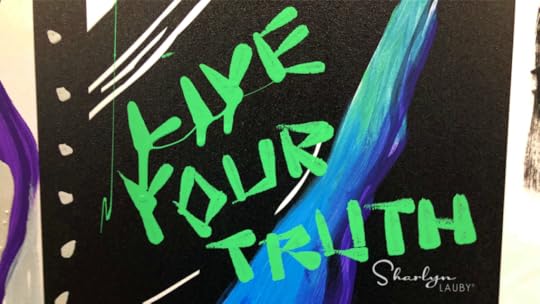
We talk a lot about the job market on HR Bartender. From a recruiter’s perspective, we share ideas for finding the best talent. For job seekers, we suggest ways to get that dream job you’ve been searching for. One of the strategies we haven’t spent much time talking about is using our past successes and failures to build a roadmap for the future in your career.
I was reminded how important debriefs can be after reading best-selling book, “Help Them Grow or Watch Them Go” by Beverly Kaye and Julie Winkle Giulioni. The book has been revised and expanded in its second edition. The chapter titled “Let hindsight light the way” really resonated with me.
I know we tell recruiting teams to do regular debriefs after they hire someone. Think of it as an extension of the intake meeting. Ask yourself, “What did we do well?” and “What could we do differently?” This isn’t about right and wrong. It’s about refining the process to become more effective and efficient.
But what about candidates? And I don’t mean candidates should have this conversation with the companies they’re applying at. I mean if you’re searching for a job, are you regularly asking yourself, “What did I do well during that interview?” and “What should I consider doing differently next time?” Don’t make the assumption that if you got the job that you did all the right things. Conversely, don’t assume if you didn’t get the job that you blew it.
In Kaye and Giulioni’s book, they’ve outlined what is called “the never-ending interview”. I’m not going to republish the entire interview here (you should pick up a copy of the book and check it out) but some of the questions include:
What skills have you always been good at?
What are your top three values that you hold most dear?
What do you enjoy learning about most?
What lessons do you find yourself learning over and over again?
I could see the never-ending interview being a terrific way for individuals to do a little debrief of their careers. As a result, I could also see people saying to themselves:
“In my last job, I didn’t get to work on these types of projects. And I miss that.”
“Early in my career, I enjoyed learning about XX. It’s time for me to pick that back up.”
“I want to work at an organization that shares my values.”
I do wonder sometimes if the reason employees become disengaged is because they know they want a new job, but have they really refined what they’re looking for in that new job (beyond the stuff like money, benefits, and commute time). In addition, I’ve been spending a lot of time over on my other blog, Unretirement Project, talking about encore careers. For individuals thinking about their long-term career journey, this type of debrief could be valuable.
“Help Them Grow or Watch Them Go” is a career conversations book. Its primary audience is human resources professionals and managers. They have regular conversations with employees about their short- and long-term career management. But I think the book is also very good for employees because it will make them think about those questions, long before they need to answer them. And that’s how career success happens.
The post Use Your Job Failures to Achieve Career Success appeared first on hr bartender.






Sharlyn J. Lauby's Blog
- Sharlyn J. Lauby's profile
- 10 followers





